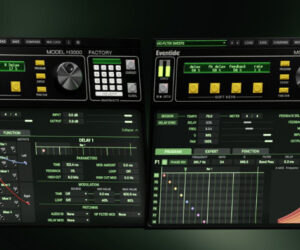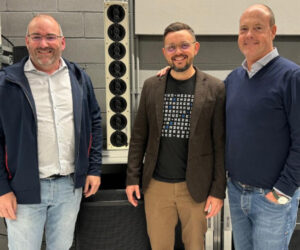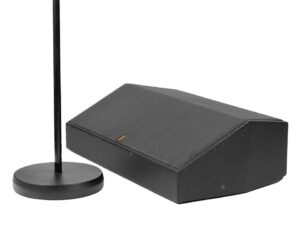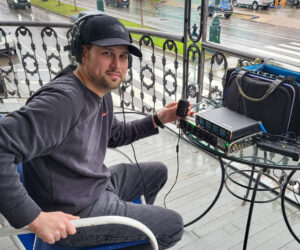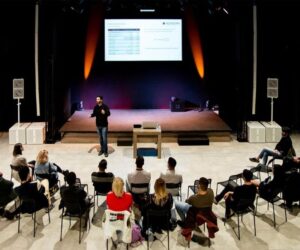ESPN’s CFP Megacast, a record-breaking simulcast of the inaugural College Football Playoff National Championship across multiple ESPN networks and services, included a natural sound feed to ESPN Classic produced using a DiGiCo SD9 digital audio mixing console.
The audio for ESPN Classic’s telecast – including performances by the Oregon and Ohio State marching bands, Aloe Blacc singing “America the Beautiful,” and Lady Antebellum performing “The Star-Spangled Banner” – was drawn from more than 100 microphones positioned throughout the AT&T Stadium in Arlington, Texas, and was mixed by Buckeye, Arizona-based freelance audio mixer Jason Blood of Happy Helmet Productions, Inc.
According to ESPN, the CFP Megacast of the championship game, which was played on Monday, January 12, 2015, delivered not only the highest rating in cable television history but also the largest audience, as reported by Nielsen.
ESPN provided over one dozen ways to watch the title contest between No. 2 Oregon and No. 4 Ohio State, including multiple cable television outlets, radio and streaming, attracting a combined average of 34,148,000 viewers and an 18.6 US household rating.
“I was basically focusing on trying to capture the essence of what it would sound like if you were watching the game inside the stadium,” explains Blood, who has mixed broadcast audio for sports events such as the X Games, NASCAR, IndyCar, College Basketball and College Football for the Golf Channel, Tennis Channel, FOX Sports, NBC Sports, ESPN, ABC and other outlets. “From an audio standpoint it was great, because we were just focusing on how to bring the best experience to the viewer at home.”
The compact SD9 console, measuring less than 35 inches wide and 31 inches deep, was ideal for this particular situation, according to Blood. “With the SD9 desk we had a smaller footprint to work with, which we needed because we were squeezed into a pretty small space, in the back of B unit next to the comms guys. But that’s what’s great about the SD9 – the MADI streams go right in, and the AES and analog inputs are right on the back – there wasn’t a whole big box of other gear that we needed to find a place for. It was just a matter of running the coax, plugging it into the back of the console, and we were ready to go. We had two full days of set-up; from that standpoint, and the physical set-up and layout, the SD9 was fantastic.”
Although there were more than 100 microphones located throughout Cowboy Stadium for use on the broadcast by live television production company Game Creek Video, which had six remote units on site, Blood reports that he was able to mix using a much more manageable number. “The SD9 console made it convenient for us because we were able to take just a couple of MADI streams from the submix truck and some AES feeds from the game truck and we were ready to go,” he says. “So we were operating on a more efficient scale.” Production equipment specialists VER Video Equipment Rentals supplied the SD9 console system.
“Basically, I got a game effects mix from the submix truck plus some other individual mixes passing through the submix truck,” he continues. “I had both the Oregon and Ohio State bands, the Oregon and Ohio State student sections, a PA feed, a referee mic, over eight mics surrounding the field for the marching bands [which they covered for both pre-game and during the halftime], plus a crowd mix. We weren’t necessarily dealing with an overwhelming number of independent microphones from the game but we had a lot of feeds and mixes from it, and we were able to do our own show independent from the show that game truck was doing.”
Unlike a traditional broadcast, during which the commentators call the play-by-play and analyze the on-field action, he continues, “It really allowed us to focus on what the marching bands sounded like, or what the student sections sounded like. It was a lot of fun to bring that atmosphere to the viewer at home, because that’s not something you get unless you’re sitting in the stands.”
Blood comments, “It was an impressive show to be on, and I’ve been on Super Bowls and other big events before. This was right up there with them. The number of programs that were happening simultaneously was impressive.” The CFP Megacast reportedly comprised 32 separate, simultaneous transmission paths. For comparison, most game broadcasts include no more than a dozen and sometimes as few as four.





